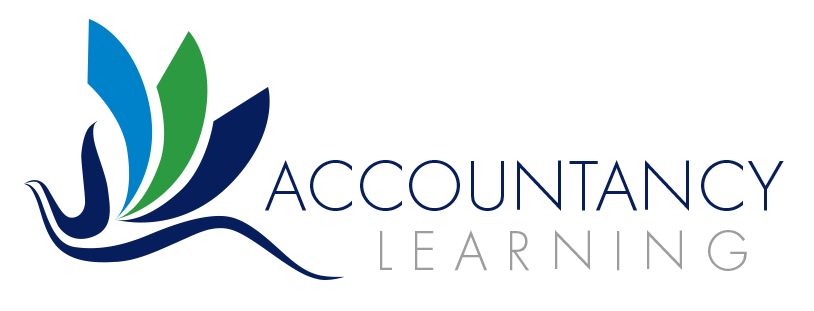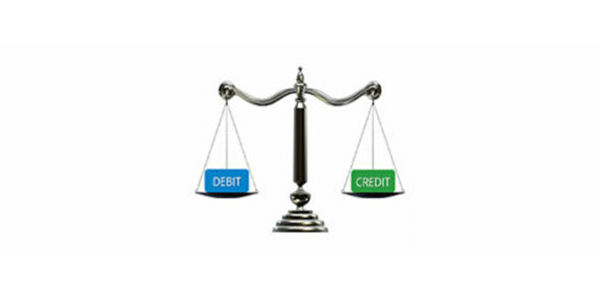Getting to grips with debits and credits in double entry bookkeeping
I am sure that you have all studied double entry bookkeeping but it may not have made sense to you at first…
Here is my explanation of it and I hope that a different point of view may help you to understand it better.
First, why do we have double entry rather than single entry?
The reason is to provide control. It is really easy to make mistakes when performing transactions – all it takes is a ‘phone call to interrupt you part way through a transaction for you to forget that you were in the middle of something and then you make a mistake.
Let’s suppose you are entering a sale of £5,645.50 and the telephone rings after you have entered the pounds but before you have entered the pence. You finish the call and then move onto the next transaction.
The risk is that you never enter the 50p into the system. However, if you enter the number a second time after the ‘phone call and enter it correctly you will know that there is a mistake because your trial balance will not balance.
It may not be easy to find where the mistake is but the double entry will at least allow you to know that there is a mistake.
Of course it is possible to make two identical errors that prevent you from discovering either error but further procedures such as control account reconciliations will help to discover those.
Debits and Credits
Next, how do we deal with the debits and credits and what do we debit and credit?
Let’s go back in time to when bookkeeping was performed with books. Part of the bookkeeping process is categorising and summarising. Showing a set of accounts with every single transaction displayed may make them difficult to understand.
You cannot see the wood for the trees. So in our big book or ledger we are going to use one page for each type of transaction.
We’ll have one page for cash coming in, one page for cash going out, one page for sales, and one page for expenditure but that one page will quickly become one page for each type of expenditure.
So for each transaction you need to decide on which two pages you need to record it. When a customer buys something for cash we need to write it on the cash in page and on the sales page.
When we buy a machine we write it on the cash out page and the machine page. When we pay a loan we write it on the cash out page and on the loan page.
Remember that we need to write it on two pages to keep control and help us to identify if we made a mistake. When you first encounter double entries it is not clear which two pages you need to use but with practice it becomes more familiar.
So, now that we have chosen the two pages, we need to consider the debits and credits..
I explained above why we need to enter all the numbers twice but that’s not enough.
The control relies on balance. We won’t find any error if the accounts do not balance and therefore each transaction needs to have balance too.
For each transaction the total of the numbers on one side needs to equal the total of the numbers on the other side. By convention we call one side debit and the other side credit.
I prepare the accounts for my son’s PTA and on my spread sheet I don’t have debits and credits.
Instead I have pluses and minuses but some people prefer to show income as pluses and expenses as minuses and that could make things confusing, so that’s why we all call them debits and credits so that everyone can understand each other’s bookkeeping.
If we work for an international business we all need to do this in the same way or our accounts will not work so everyone uses the same debit and credit convention.
So should we use a debit or a credit for our transaction?
It’s easiest to consider cash transactions first!
The convention is that cash coming in is a debit and we write it on the left side of the page.
Cash going out is a credit and we write it on the right side of the page. So if we paid £100 petty cash into the bank we would choose the bank page and the petty cash page in the ledger and write £100 on the left of the bank page and £100 on the right of the petty cash page.
But most transactions are not transfers of cash so we need to understand what other transactions are in terms of debits and credits. Let’s use the examples we had above..
Example:
- A customer buys something for cash. We already identified that we need the cash in page and the sales page. It is cash coming in so we need to write it on the left side of the cash in page and therefore on the right side of the sales page to keep the balance.
- We bought a machine with cash. Cash is going out so we write it on the right side of the cash page and therefore on the left side of the machine page to maintain balance.
- We paid off a loan. Cash is going out so we write it on the right side of the cash page and the left side of the loan page to keep the balance. But what if there is no cash?
- Suppose a customer buys something but will pay later? We saw three paragraphs above that when we make a sale we write it on the right side of the sales page. We shall still do the same now even though no cash has arrived. To keep balance we need to write the transaction on the left side of the page too – in this case the debtors page or accounts receivable page.
So, using the principle of cash coming in is a debit on the left side and cash going out is a credit on the right side, and following the logic for all other transactions we can see the following pattern.
- Debits (left side of page) are increases in assets, increases in expenses, increases in drawings, decreases in liabilities, decreases in sales and decreases in capital.
- Credits (right side of page) are increases in liabilities, increases in sales, increases in capital, decreases in assets, decreases in expenses and decreases in drawings.
I like to remember these as DEAD CLIC.
Debits are: increases in Expenses, Assets and Drawings.
Credits are: increases in Liabilities, Income and Capital.
Enrol with us today
Head here to browse our courses: Courses – Accountancy Learning
Enrol now: Shop – Accountancy Learning
For any other questions, please get in touch with us, we are always happy to help.
Call us: 01392 435349
Email us: [email protected]
Message us: Facebook






